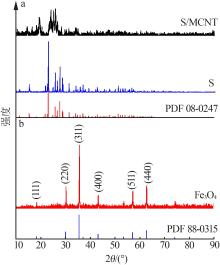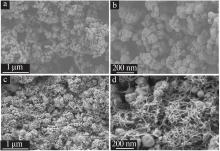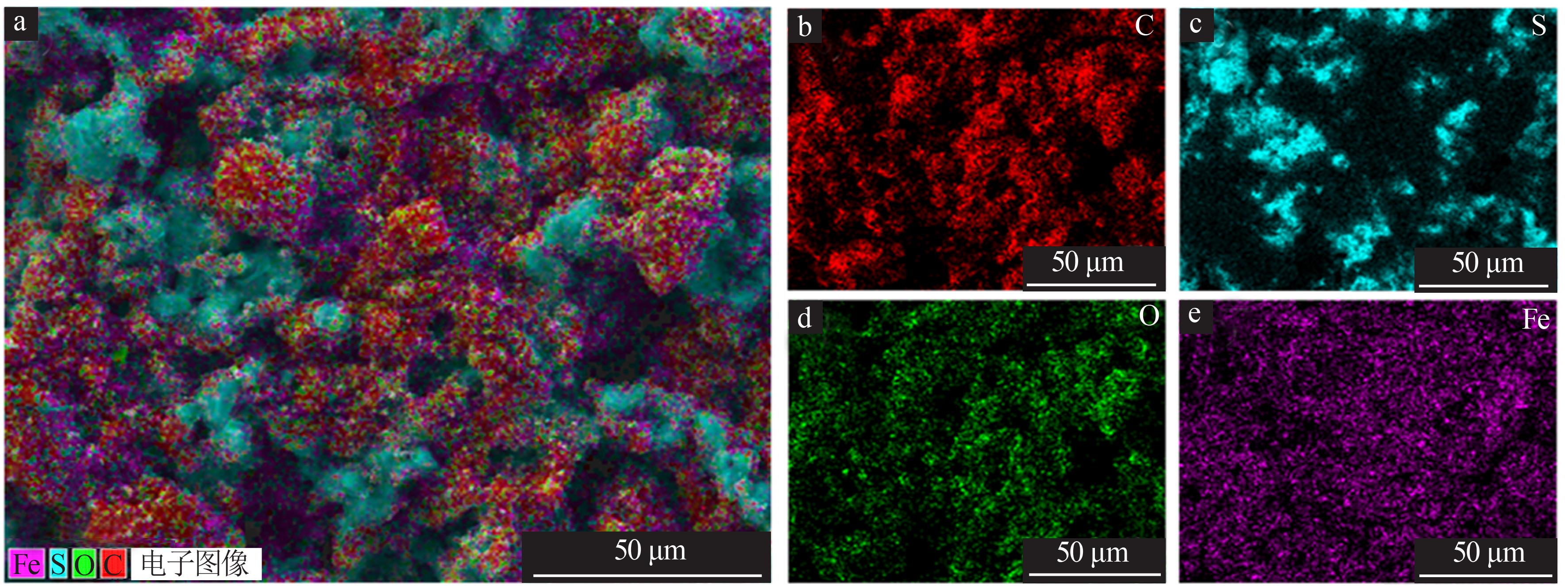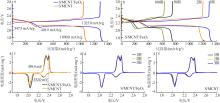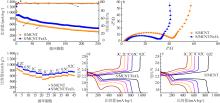| 1 |
WANG Chao, YANG Jingjing, LI Taozhu,et al.In situ tuning of defects and phase transition in titanium dioxide by lithiothermic reduction[J].ACS Applied Materials & Interfaces,2020,12(5):5750-5758.
|
| 2 |
LI Na, GAN Fangyu, WANG Peng,et al.In situsynthesis of 3D sulfur⁃doped graphene/sulfur as a cathode material for lithium⁃sulfur batteries[J].Journal of Alloys and Compounds,2018,754:64- 71
|
| 3 |
CHUNG S H, CHANG Chihao, MANTHIRAM A.A core⁃shell
|
|
electrode for dynamically and statically stable Li-S battery chemistry[J].Energy & Environmental Science,2016,9(10):3188-3200.
|
| 4 |
CHUNG S H, MANTHIRAM A.Carbonized eggshell membrane as a natural polysulfide reservoir for highly reversible Li-S batteri⁃ es[J].Advanced Materials,2014,26(9):1360-1365.
|
| 5 |
HU Anjun, ZHOU Mingjie, LEI Tianyu,et al.Optimizing redox reactions in aprotic lithium⁃sulfur batteries[J].Advanced Energy Ma⁃ terials,2020,10(42).Doi:10.1002/aenm.202002180 .
doi: 10.1002/aenm.202002180
|
| 6 |
HE Jiarui, CHEN Yuanfu, LI Pingjian,et al.Three⁃dimensional CNT/graphene⁃sulfur hybrid sponges with high sulfur loading as superior⁃capacity cathodes for lithium⁃sulfur batteries[J].Journal of Materials Chemistry A,2015,3(36):18605-18610.
|
| 7 |
HE Jiarui, CHEN Yuanfu, LV Weiqiang,et al.From metal⁃organic framework to Li2S@C-Co-N nanoporous architecture:A high⁃capacity cathode for lithium⁃sulfur batteries[J].ACS Nano,2016,10(12):10981-10987.
|
| 8 |
HE Jiarui, CHEN Yuanfu, LV Weiqiang,et al.Three-dimensional hierarchical reduced graphene oxide/tellurium nanowires:A high⁃performance freestanding cathode for Li-Te batteries[J].ACS Nano,2016,10(9):8837-8842.
|
| 9 |
HU Guangjian, SUN Zhenhua, SHI Chao,et al.A sulfur⁃rich Copolymer@CNT hybrid cathode with dual⁃confinement of polysulfides for high⁃performance lithium⁃sulfur batteries[J].Advanced Materials,2017,29(11).Doi:10.1002/adma.201603835 .
doi: 10.1002/adma.201603835
|
| 10 |
宋娅,龙家英,庞驰,等.多级孔碳在锂硫电池正极中的研究进展[J].无机盐工业,2021,53(6):41-48.
|
|
SONG Ya, LONG Jiaying, PANG Chi,et al.Research progress of hierarchically porous carbon in the cathode of lithium⁃sulfur batteries[J].Inorganic Chemicals Industry,2021,53(6):41-48.
|
| 11 |
王甲泰,郑思康,王雅蓉,等.碳材料在锂硫电池中的应用研究[J].无机盐工业,2018,50(9):1-6.
|
|
WANG Jiatai, ZHENG Sikang, WANG Yarong,et al.Study on application of carbon materials in lithium⁃sulfur batteries[J].Inorganic Chemicals Industry,2018,50(9):1-6.
|
| 12 |
HE Jiarui, LUO Liu, CHEN Yuanfu,et al.Yolk-shelled C@Fe3O4 nanoboxes as efficient sulfur hosts for high⁃performance lithium⁃sulfur batteries[J].Advanced Materials,2017,29(34).Doi:10 .
doi: 10
|
|
1002/adma.201702707.
doi: 10
|
| 13 |
SEO S D, YU S, PARK S,et al.In situ conversion of metal⁃organic frameworks into VO2-V3S4 heterocatalyst embedded layered porous carbon as an “all⁃in⁃one” host for lithium⁃sulfur batteries[J].Small,2020,16(47).Doi:10.1002/smll.202004806 .
doi: 10.1002/smll.202004806
|
| 14 |
WANG Ruochen, LUO Chong, WANG Tianshuai,et al.Bidirectional catalysts for liquid⁃solid redox conversion in lithium⁃sulfur batteries[J].Advanced Materials,2020,32(32).Doi:10.1002/adma.202000315 .
doi: 10.1002/adma.202000315
|
| 15 |
XU Zhenglong, KIM S J, CHANG D,et al.Visualization of regulated nucleation and growth of lithium sulfides for high energy lithium sulfur batteries[J].Energy & Environmental Science,2019,12(10):3144-3155.
|
| 16 |
FANG Ruopian, ZHAO Shiyong, SUN Zhenhua,et al.More reliable lithium⁃sulfur batteries:Status,solutions and prospects[J].Advanced Materials,2017,29(48).Doi:10.1002/adma. 201606823 .
doi: 10.1002/adma. 201606823
|
| 17 |
SEH Z W, SUN Yongming, ZHANG Qianfan,et al.Designing high⁃energy lithium⁃sulfur batteries[J].Chemical Society Reviews,2016,45(20):5605-5634.
|
| 18 |
DU Zhenzhen, CHEN Xingjia, HU Wei,et al.Cobalt in nitrogen⁃doped graphene as single⁃atom catalyst for high⁃sulfur content lithium⁃sulfur batteries[J].Journal of the American Chemical Society,2019,141(9):3977-3985.
|
| 19 |
LI Juan, XU Youlong, ZHANG Yuan,et al.Enhanced redox kinetics of polysulfides by nano⁃rod FeOOH for ultrastable lithium⁃sulfur batteries[J].Journal of Materials Chemistry A,2020,8(37):19544-19554.
|
| 20 |
LI Pengyue, LV Haowei, LI Zhonglin,et al.The electrostatic attraction and catalytic effect enabled by ionic⁃covalent organic nanosheets on MXene for separator modification of lithium⁃sulfur batteries[J].Advanced Materials,2021,33(17).Doi:10.1002/adma.202007803 .
doi: 10.1002/adma.202007803
|
| 21 |
KAZAZI M, VAEZI M R, KAZEMZADEH A.Improving the self⁃discharge behavior of sulfur⁃polypyrrole cathode material by LiNO3 electrolyte additive[J].Ionics,2014,20(9):1291-1300.
|
 ),ZHU Shaokuan1,WEI Yuxiao1,LONG Jiaying1,HUANG Dongchuang1,SHAO Jiaojing1,2,3(
),ZHU Shaokuan1,WEI Yuxiao1,LONG Jiaying1,HUANG Dongchuang1,SHAO Jiaojing1,2,3( )
)
